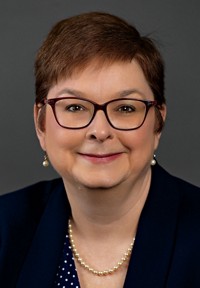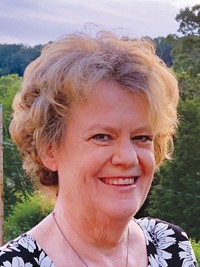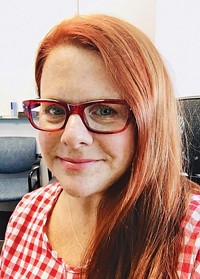Advertisement
Grab your lab coat. Let's get started
Welcome!
Welcome!
Create an account below to get 6 C&EN articles per month, receive newsletters and more - all free.
It seems this is your first time logging in online. Please enter the following information to continue.
As an ACS member you automatically get access to this site. All we need is few more details to create your reading experience.
Not you? Sign in with a different account.
Not you? Sign in with a different account.
ERROR 1
ERROR 1
ERROR 2
ERROR 2
ERROR 2
ERROR 2
ERROR 2
Password and Confirm password must match.
If you have an ACS member number, please enter it here so we can link this account to your membership. (optional)
ERROR 2
ACS values your privacy. By submitting your information, you are gaining access to C&EN and subscribing to our weekly newsletter. We use the information you provide to make your reading experience better, and we will never sell your data to third party members.
Comment
Comment: ACS initiatives communicating chemistry’s value
by Mary K. Carroll
May 16, 2024
| A version of this story appeared in
Volume 102, Issue 15

Our professional society has lofty aims and important goals. I’m taking this opportunity to emphasize some initiatives helping to achieve one of the five ACS goals: communicate chemistry’s value. At the outset, I want to note that these are not initiatives I have started or am leading. During my time in the ACS presidential succession, I am focusing on amplifying ACS initiatives: promoting ACS activities that yield maximum results for members and society.
I am delighted to emphasize the Trust in Science and Scientists efforts of ACS immediate past president Judy Giordan. The COVID-19 pandemic demonstrated the critical importance of conducting pure and applied science in an ethical and safe manner. Nevertheless, trust in science is declining, and scientists are sometimes viewed with suspicion. In a recent Comment, Judy elaborated on this issue and highlighted ongoing ACS programs as well as upcoming efforts from her presidential initiatives in the science communication space.
A product that is distinct from but aligns with these efforts—the free C&EN email course Selling Your Science: The Art of Science Communication—has launched! I’ve just signed up to participate.
When someone asks what you do or what you study, do you enthusiastically engage them? Do you share your passion for your role in the scientific enterprise, the career path you took (or are taking), and the factors that motivate you to contribute to the broader chemistry enterprise? And if that person is from outside the scientific community and replies, “I hated chemistry” or “I could never understand chemistry,” do you respond in a manner that both respects their lived experiences and encourages continued dialogue? Or do you shy away from such conversations, perhaps out of a lack of confidence in your ability to constructively communicate about chemistry with those outside the STEM community? Like Judy, I understand how critically important it is for us to listen closely to the public’s concerns and communicate what we know and what we don’t know as scientists and engineers. We should—individually and collectively—take every opportunity to do so. That said, if I’m being honest, even as a longtime ACS volunteer leader and proud chemist, I sometimes hold back in my informal interactions with members of the general public. I encourage all ACS members—from students to retirees—to join me in taking the Selling Your Science course. We will each receive one message a week designed to help us communicate more effectively with the public as well as with others in STEM fields.
Another ACS initiative I’m enthusiastic about is the National Historic Chemical Landmarks (NHCL) program. This ACS program celebrates major advances in the chemical sciences that have significantly benefited society and the chemistry profession and enhanced public awareness of the contributions of chemistry and the chemical science and engineering professionals who have made those advances.
I’ve had the privilege of representing ACS at several NHCL events, including three this year honoring the following:
▸ The chemical hearth in the Rotunda at the University of Virginia, which is thought to be the oldest remaining example of a hands-on laboratory for teaching chemistry in the US. After being bricked up for well over a century, the hearth was uncovered during a restoration and is now featured in campus historical tours attended by thousands of people each year. The educational impact of engaging students in experimental work has stood the test of time.
▸ Crest toothpaste was developed through an academic-industrial collaboration. Indiana University (IU) dentists and chemists worked in partnership with Procter & Gamble (P&G) to introduce a stable form of fluoride into toothpaste. In early April, back-to-back NHCL dedications were held at P&G in Cincinnati and IU Bloomington. Some of the audience members at IU were “Crest kids” who participated in the studies of the effectiveness of fluoride toothpaste, which has subsequently improved dental health for billions of people across the globe.
▸ Highly active antiretroviral therapy (HAART) for HIV has rendered HIV infection manageable, albeit chronic. Researchers, medical professionals, and activists worked to address the AIDS crisis. HAART therapy has literally saved millions of lives since the mid-1990s. The first NHCL dedication for HAART was held at Merck & Co. in 2022. I participated in the second NHCL dedication at GSK this month.
There are 102 National Historic Chemical Landmarks, each celebrating significant achievements within our community and providing ample opportunity to demonstrate the value of chemistry to the general public. ACS welcomes nominations for future landmarks from local sections, divisions, and committees.
Let’s all do everything we can to communicate chemistry’s value!
Views expressed are those of the author and not necessarily those of C&EN or ACS.





Join the conversation
Contact the reporter
Submit a Letter to the Editor for publication
Engage with us on Twitter